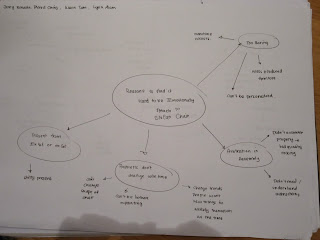




Reflection
Design for Disasters Reflection
During the course of this project, I had to understand what it was like to be in a situation similar to disaster victims to really understand what they would need at certain points. To do this, I had to look at many vivid images and read descriptions of the way the disaster unfolded and how it had affected people’s lives. Doing this really put into perspective the fact that there are many things in the world that are still waiting for someone to design and in a situation like this, it can be a matter of life and death. To put myself in the shoes of the victims and try to image what they were going through will never come close to what they actually experienced but I think just looking at the pictures and watching videos was enough to make me realize that these people could have been helped in a much better way.
Going through the research and trying to figure out something that could be a feasible product was a challenge as I really couldn’t predict what would happen in a disaster. There are many situations that a person could be faced with when a disaster happens. I’ve learned that we can’t solve everything so we should look at one problem and do our best to fully solve it so that others may focus on other problems.
During the model making process, I came across multiple problems in trying to make it look as real as possible. This also made me realize things that I didn’t think of before such as the way a screw or bold would stick out of its attachment or the size of specified products. If those products weren’t available then I would have to go and choose something else that was existing or design it myself.
Overall, I think this was an important learning experience as we can’t keep design chairs our whole lives. There are still things that are needed in this world which require patience to design and a lot of accuracy. Looking back at what I did, I should have asked professionals for my specific problems instead of looking it up on the internet because there may be different interpretations of the same component except in a different context.































